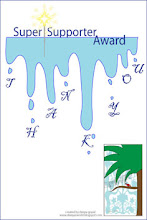Diving in Andamans
There is no greater adventure than diving, my dear friends! Whether you are a novice or an experienced proficient diver, there is always something new, fascinating or challenging about venturing into the underwater world. Your mind may be mesmerized by clouds of colorful fish, your curiosity raised by the mysterious remains of sunken ships or your creativity awakened by the art of underwater photography. Your diving interests may range from a casual pastime pursued on vacation, to a constant passion, or even a career. Diving has something new to offer for everyone.
Many of the islands are surrounded by fringing reefs, often several hundred meters wide and separated from the shore by a lagoon of similar width. There are also more steeply sloping reef walls, and coral pinnacles or knolls. Divers can follow around steeply undulating hills of raven volcanic lava, which makes for some very unusual diving experience. There are plenty of steeply sloping and shallow reefs suitable for snorkeling.
Large pelagic beings are plentiful in these waters, as are a variety of sharks. Large schools of hammerhead often patrol the waters away from the reefs and Grey, Whitetip, Nurse and leopard sharks are found closer inshore. Silvertip and ocean Whitetips also sometimes appear out of the deep blue beyond. Enormous manta Rays are also often seen.
North Point: This site at Cinque Island is mostly highlighted by sponges and small corals and offers good diving because of the abundance and diversity of fish life.
Southeast Reef at Cinque Island is a good site for novices. The southeast part of the reef consists of hard and soft corals and these are very dense on the rocks down to about 16m (53 ft.).
● Fish Rock near Passage Island offers an extremely colorful dive. The topography consists of rocky slopes, boulders and drop-offs, featuring large fan of corals and plenty of sponges. Below 25m, the rocks are covered in small bushy soft corals in numerous hues. Hard corals are not so evident. Grey and Whitetip Reef Sharks are almost always in the vicinity as are Nurse Sharks.
Among the rest of the marine life are Eagle Rays, Potato Cod, large coral groupers, fusiliers, sweetlips, turtles, batfish, bumphead, Parrotfish, Squirrelfish, curious and friendly oriental sweetlips, surgeonfish, yellow Tangs, Triggerfish, Tuna, Rainbow runners and many species of trevally.
● Bala Reef: On the western side of Little Andaman, Bala Reef spreads over 4-5 sq. km and is said to be one of the best sites in the Andamans for coral- with vibrant colours.
● Corruption Rock: Corruption Rock sticks out between ‘Chidiyatapu’ and Rutland Island. The dive site is on the western side of the rock and is made up of big underwater boulders. The corals are not brilliant but the craggy undersea landscape of boulders is stunning. A fantastic wonderland of gullies, channels, ridges and canyons! Look out for giant napoleons and eagle rays, huge snappers, schooling fusiliers, banner and unicorn fish. Dolphins, tuna and reef sharks have also been sighted here.
● Snake Island off Corbyn’s Cove beach offers awesome rock faces and spectacular dive landscape. Marine life includes Trigger fish, Grunts, Goatfish and Rays.
● Havelock Island: This is located approximately 50kms from Port Blair by inter-island ferry. There is a wide range of largely unexplored dive sites rich in underwater marine life.
Mac Point: Mostly hard corals and their inhabitants are found. Usually good visibility dugongs have been spotted here.
Aquarium: It is a fringing reef with lots of ‘fish-traffic’. Usually good visibility hard corals are found here.
Barracuda City: Tons of fish, sometimes turtles, mostly hard and some soft corals. Rather suitable for experienced divers.
Turtle Bay: This is an easy pleasant dive site not exceeding 14 meters. Rays are found in the sand and with luck turtles.
Seduction Point: A huge rock with different kind of aquatic life. Napoleons can be seen. The shallow part is full with stag horn corals and its inhabitants.
Lighthouse is a huge dive site, suitable for any kind of dives. Huge variety of soft and hard corals is found here. It is perfect for night-dives.
The Wall is a huge submerged rock. The Wall drops down to a maximum of 55 meters and is full of life. Huge forests of soft corals and schools of fish circling you, makes it always a memorable dive.
Pilot Reef near Havelock is a huge block of pristine hard corals. At the bottom (max 24 meters) ‘canyons’ are stretching out. Leopard and Whitetip Sharks have been sighted.
Minerva Ledge at Havelock is an even bigger block of hard corals. Tons of fish, usually good visibility and the possibility of seeing sharks makes it one of the top dive sites.
● Campbell Shoal Off North Button Island: The bottom of this site is covered in mainly hard corals, with sporadic sandy patches and hosts a multitude of reef animals. The marine life includes Whitetip Reef Sharks, large cod and groupers, Coral Trout, Blue and Golden-banded fusiliers, Giant Trevally and a host of colourful reef-fish.
Tips For Dive Tourists (inserted as per the instructions of the A & N Administration):
• Best season for diving – December to April.



































